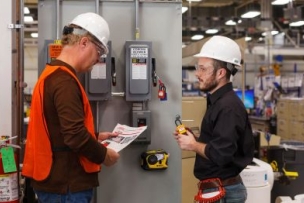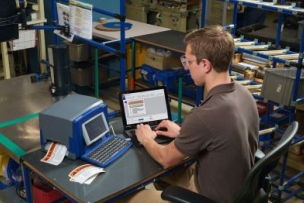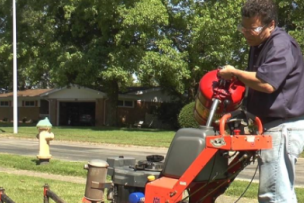It takes a lot to get it right. To be a company that lasts more than 100 years by continually evolving and growing to meet the needs of our markets and customers. Our first-to-the-market and best-in-the-market approach led us to receive hundreds of patents over the years and truly shape an industry. We do what others don't in ways they can't. We offer innovative products backed by years of research and development. Beyond our quality products and reliable solutions, we add value for our customers through strong partnerships and a commitment to solving important problems. Brady offers solutions to help increase safety, security, productivity and performance throughout your facility—everything from printing systems, software and high-performance labels to facility signs, safety devices, expert safety services and more.
Employees who work on or around energized equipment or machinery are exposed to electrical hazards, including arc flash, daily while on the job. Even in situations where an employee isn’t directly working on energized electrical parts, there could be exposure to an arc flash hazard. Employers have a responsibility to identify and protect employees from these hazards. Regulatory bodies, including the Occupational Safety and Health Administration (OSHA) and The National Fire Protection Association (NFPA), regulate, and set the standards for, electrical safety in the workplace.
A requisite step in protecting employees is to perform an assessment of the workplace which identifies hazards, estimates the likelihood of hazard occurrence, outlines potential injuries associated with each hazard and determines the Personal Protective Equipment (PPE) required to work safely around the potential hazard. This four-step process is outlined in OSHA’s Risk Assessment and Equipment Selection Standard 29 CFR 1910.132. Specifically, a current and accurate Arc Flash Risk Assessment will help reduce employee exposure to arc flash hazards. Arc flash risk assessments are very complex studies that require a solid foundation in the latest study performance standards and the application of that information to the specific work environment. What follows is a review of arc flash events, an outline of the assessment process and a review of additional compliance needs. In combination, these components will help keep employees safe.
What is an arc flash event?
An arc flash is the release of energy over a very short time period, through an electrical arc. These events are often caused by human error or equipment failure in an electrical system. During the event, energy is released in the form of heat, intense ultraviolet and infrared light, blast pressure waves and intense sound waves. Additionally, smoke, toxic fumes, molten metal and flying shrapnel may accompany the electrical event. In many ways, an arc flash event is very similar to a bomb. A person in proximity to an arc flash blast can suffer severe burns, collapsed lungs, loss of vision, ruptured eardrums, soft tissue injuries, broken bones or even death.
The NFPA defines an arc flash occurrence as “when an electrical current passes through air between ungrounded conductors or between ungrounded and grounded conductors.” The temperatures in an arc flash event can reach temperatures of 35,000° F which is three-times hotter than the surface of the sun.
Causes of an arc flash event
There are two major causes of arc flash events:
Human error
The most prevalent cause is human error. Examples of human error include accidental contact of energized circuit parts with conductive tools or body parts, lack of training or insufficient training and installation issues including incorrect wiring or improper labeling.
Equipment failure
The other major cause of arc flash events is equipment failure. These equipment failures can take on many forms and include, loose connections causing arcing or overheating, improper equipment rating for the system in which it is installed and the breakdown of insulation on cables or other energized parts allowing current to flow outside of its intended path. Poor maintenance can exacerbate equipment failures leading to rust, dust, debris, condensation or exposure to water triggering an arc flash event. Transient events from utilities, lightning or events generated from within the facility can also cause an arc flash event. Finally, an employee who is interacting with a piece of improperly maintained piece of equipment needs to be able to recognize possible signs of imminent failure, such as excessive heat or noise.








Talk to Us!
Leave a reply
Your email address will not be published. Required fields are marked *